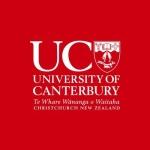Different flavour of businesses in CBD and new long-term hubs outside the central city
A post-quake Christchurch is likely to see a different mix of businesses occupying the future CBD and new long-term concentrations of businesses outside the central city, University of Canterbury (UC) research has found.
UC Professor Simon Kemp, who supervised the research, said planning for other commercial areas outside the central city such as Riccarton, Addington and Sydenham would probably be worth undertaking; including new public transport hubs might become important.
It seems likely that a relatively small, compact central city will at least initially house fewer businesses than it did previously. Many of the relocated businesses have found the past year or so quite tough, he said.
``Types of business not so likely to return include many retailers, those offering financial services and businesses that are concerned with making or repairing things. The longer businesses stay away, the less likely they are to return.
``A large number of businesses that used to be in the centre of Christchurch relocated after the earthquakes. The overall chance of return for bigger businesses was greater (55 percent) than for small ones (42 percent). Some types of business are more likely to return than others. For example, many legal concerns are likely to return – so as to be near the courts.’’
The UC earthquake research project asked 209 businesses if they were satisfied with their new locations and whether they intended to return to the central city.
``Many businesses were content with their new premises and law firms said they were more likely to return to the CBD than financial service organisations. Building height did not emerge as a major issue, but rents may be,’’ Professor Kemp said.
After the February 22, 2011 earthquake, most of the centre of Christchurch, the area that lies within the Four Avenues, was closed down. Some buildings were ruined, many were later discovered to be ruined, and almost all seemed dangerous. Prior to the September 4, 2010 earthquake, over 6,000 businesses employed over 50,000 people.
The vast majority of these were not able to continue business in the central city. Some closed; some relocated outside the central city. The struggles of the survivors have been well documented. Since the February earthquake, there has been a slow shift in focus from day-to-day survival to the more medium-term future, he said.
Plans to rebuild the central city have been developed. Firms that have survived relocation might look either to move back to the city or consolidate their businesses in new locations.
``The earthquakes drove many businesses to the suburbs, but some would have gone anyway. We would not expect all the relocated businesses to return to the CBD and, indeed, it might be better both for many of the businesses themselves and for the Christchurch community as a whole if they did not. Indeed, the plans for a new, more compact inner city suggest that there might not be space in the central city for all of them.
``This is not the only piece of research that has looked at how Christchurch businesses are planning for the future. We encourage people to consider our research as one piece of the jigsaw and to look also at these other sources of information. The picture is complex and constantly changing.
``Businesses have tended to relocate to the west of the city (Riccarton, Addington, or a little further out). Secondly, most have not moved very far (Riccarton or Addington rather than Harewood, for example; or Sydenham rather than St. Martins),’’ Professor Kemp said.
